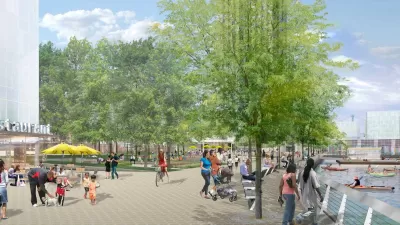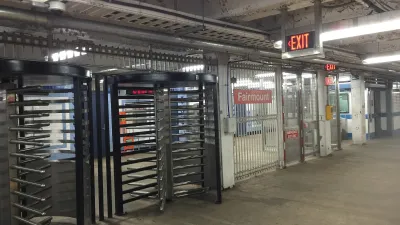Philadelphia's SugerHouse waterfront development could learn a thing or two from San Francisco's Mission Bay neighborhood, according to this piece.
"Mission Bay is easily one of the best new waterfront neighborhoods in America, with 2,700 new condos already built. Yet a mere 10 years ago, the place didn't exist. It was 300 acres of raw brownfields, populated by a few hardened pioneers living on houseboats in Mission Creek.
Clearly, San Francisco didn't get its waterfront to this point by following the SugarHouse model.
The Nutter administration took some heat last week for signing off on the gaming operator's plan to build a suburban-style box surrounded by acres of asphalt parking just south of Penn Treaty Park. Public anger would be more fairly directed at Gov. Rendell, who prefers easy money to real development, and who imposed this crummy slots barn on the Delaware waterfront.
But even a master plan doesn't guarantee that Philadelphia will produce its version of Mission Bay. San Francisco's plan was in place for years before development took off.
How did San Francisco do it? Obviously, the explosive growth in nearby Silicon Valley and the city's famously tight housing market helped make Mission Bay attractive to developers. In 2000, the opening of the Giants' AT&T Park, set firmly within the city grid, helped focus attention on the neighborhood. So did the extension of an urbane light-rail line."
FULL STORY: Changing Skyline: Some waterfront lessons from the City by the Bay

Trump Administration Could Effectively End Housing Voucher Program
Federal officials are eyeing major cuts to the Section 8 program that helps millions of low-income households pay rent.

Planetizen Federal Action Tracker
A weekly monitor of how Trump’s orders and actions are impacting planners and planning in America.

Ken Jennings Launches Transit Web Series
The Jeopardy champ wants you to ride public transit.

Crime Continues to Drop on Philly, San Francisco Transit Systems
SEPTA and BART both saw significant declines in violent crime in the first quarter of 2025.

How South LA Green Spaces Power Community Health and Hope
Green spaces like South L.A. Wetlands Park are helping South Los Angeles residents promote healthy lifestyles, build community, and advocate for improvements that reflect local needs in historically underserved neighborhoods.

Sacramento Plans ‘Quick-Build’ Road Safety Projects
The city wants to accelerate small-scale safety improvements that use low-cost equipment to make an impact at dangerous intersections.
Urban Design for Planners 1: Software Tools
This six-course series explores essential urban design concepts using open source software and equips planners with the tools they need to participate fully in the urban design process.
Planning for Universal Design
Learn the tools for implementing Universal Design in planning regulations.
Heyer Gruel & Associates PA
Ada County Highway District
Institute for Housing and Urban Development Studies (IHS)
City of Grandview
Harvard GSD Executive Education
Toledo-Lucas County Plan Commissions
Salt Lake City
NYU Wagner Graduate School of Public Service





























